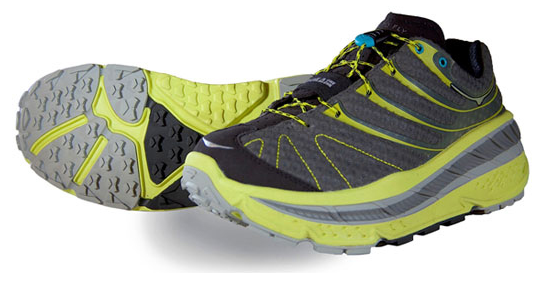 Hoka One One Stinson EVOLast year I wrote a piece on running different. In it, I focused on the impact that the barefoot running movement has had on running technique. It’s not like the technique is new or even “lost”. It’s just that the jogging craze of the 70’s popularized heel striking and things went downhill from there.
Hoka One One Stinson EVOLast year I wrote a piece on running different. In it, I focused on the impact that the barefoot running movement has had on running technique. It’s not like the technique is new or even “lost”. It’s just that the jogging craze of the 70’s popularized heel striking and things went downhill from there.
Minimalist Review
The new school running movement of late brought back mid and fore foot striking and, I believe, we’re all better for it. What I did NOT do in that essay was embrace barefoot and minimalist shoes. Thank god because what I’m going to share with you here would be even more scandalous if I had.
To review, my contentions in Running Different is that minimal or barefoot running technique nearly demands that runners adopt a midfoot or forefoot striking gait. This is a good thing. But I went on to point out the perils of this footwear when traveling off road. Foot protection and sticky rubber are things that can enhance, not detract from the trail running experience. Not to mention the significant injury potential of running with minimal protection. I conclude that it is the technique and not the shoe that is important.
Running Longevity
Decades ago I was shopping with a friend who wanted to buy a pair of hiking boots. This was at a time when people were starting to lighten up their kit when traveling in the mountains. This guy made a comment that always stuck with me. He said that he was unimpressed with the super light footwear movement. He wanted to be hiking long into old age and felt that his feet would suffer over the long term wearing shoes with minimal protection. He had a point.
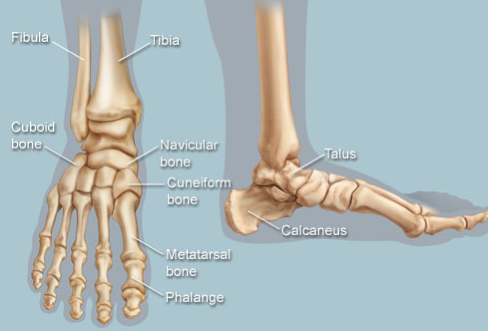 Plenty of things to wear outNow, you don’t have to be an orthopedic surgeon to realize that the beating our feet take playing in the mountains might have some degenerative consequences on our joints. Hips, knees, ankle and feet all suffer the abuse. As a population, we are shod from birth and so our feet are particularly vulnerable. Add race pace aggression on a downhill and suddenly being barefoot or lightly shod no longer seems like such a good idea.
Plenty of things to wear outNow, you don’t have to be an orthopedic surgeon to realize that the beating our feet take playing in the mountains might have some degenerative consequences on our joints. Hips, knees, ankle and feet all suffer the abuse. As a population, we are shod from birth and so our feet are particularly vulnerable. Add race pace aggression on a downhill and suddenly being barefoot or lightly shod no longer seems like such a good idea.
At one end of the modern shoe quiver are kicks like the Vibram Five Finger and the Merrel Barefoot Trail Glove. These have their place. Not a bad idea for walking around town, the beach, water sports or the weight room. 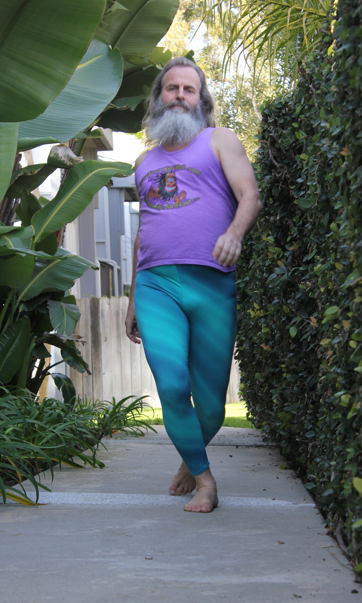 Barefoot Bob - barefoot running celebrity. Of course he has a crazy beard.But for trail running, I think they’re stupid. That said, I still see plenty of folks out there running in them in the hills, proving a point, looking all groovy and shit like tele skiers back in the 80’s (see photo above).
Barefoot Bob - barefoot running celebrity. Of course he has a crazy beard.But for trail running, I think they’re stupid. That said, I still see plenty of folks out there running in them in the hills, proving a point, looking all groovy and shit like tele skiers back in the 80’s (see photo above).
Just as I’m an admitted recovered telemark skier, I ran in the woods once in Five Fingers. I moved like a freaking Ninja from Teton Village up Granite Canyon to the top of the tram. Took me about 2.5 hours. Sure, I felt pretty neat for the first few miles. “Hey, look at me. I’m a soul runner!” But by the time I got to the top I just felt like an asshole…one who’s feet felt like they’d been caned like a 19th century Malasian juvenile delinquent who got caught trying to run away from boarding school. I could barely walk. Thank god I could ride the tram down.
Diving In
For the last season or two I've utilized shoes a notch or two up from these thin-soled options. I wanted some protection and a lug sole for running in the mud. You can read my review of these here. My feet still hurt after long outings but I figured that was just part of the deal. Or was it?
Every time I went to the shoe store to see what was new, a brand of shoes representing the other end of the spectrum never failed to grab my attention. Of course, I’m referring to the Hoka One One (pronounced hoe-kah oh-nay oh-nay, Maori for “time to fly”). 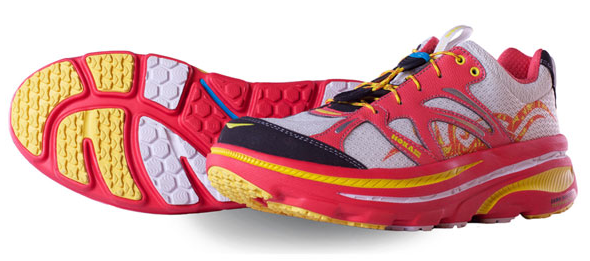 Hoka Bondi SpeedThese pillow-soled beasts looked ridiculous to me with their 6 cm of EVA sole under the heel. I always asked a few questions about them, even ran on the treadmill a time or two but just couldn’t get myself to commit the $160 to check them out.
Hoka Bondi SpeedThese pillow-soled beasts looked ridiculous to me with their 6 cm of EVA sole under the heel. I always asked a few questions about them, even ran on the treadmill a time or two but just couldn’t get myself to commit the $160 to check them out.
Still, the idea of that kind of protection under foot continued to occupy my thoughts, even more so after long runs that left my dogs barking. I sheepishly raised the topic with one of my experienced running friends, a guy with a track pedigree. He scoffed and questioned my sexual orientation when I mentioned the Twinkie Shoes. I really felt like I was swimming up stream here.
After a couple of friends stepped up for them and sang their praises, I started researching more. I discovered a few high level ultra runners using them and that pushed me over the brink. It was time to check them out.
Hoka makes several models and I decided on the most off-road friendly one, the Stinson EVO. I now have 34 hours on them. I’ve covered everything from pure asphalt to technical 4th class ridge traverses. Murder Traverse test driveI even did the Alyeska Climbathon in them. That’s 23,500 vertical feet of ascending over 9 hours. My overall impression continues to be positive. Hokas are not the perfect shoe because such a beast doesn’t exist. But they work surprisingly well in a variety of conditions and excel in a few others.
One of the first things a salesman will point out about the Hokas when a customer gawks at the thick sole is that the shoes are “minimal” in a sense. No, they’re not bare foot minimal but they are “rise” minimal. In fact, they claim only a 4mm delta. That’s pretty damn flat. Although the heel looks super beefy and much higher than the front end, the foot actually sits down inside a pocket in back so the relative height is less.
But the wearer is higher and this brings my number one concern to light – stability. I was afraid that I'd be more prone to rolling my already dicey ankles. In truth, the shoes seem to be more, not less, stable. This is due to the wider footprint and cushy nature of the sole. The idea is that with a firm sole, any uneven rock deflection potentially generates lateral torque, creating the dreaded ankle roll. Hokas, with their soft mid-sole material, deforms rather than deflects and slows the moment of sketchy angular acceleration. This creates stability. As one guy puts it, they’re full suspension for your feet.
The beauty of this kind of protection is that you can worry less about each foot fall and simply steam roll pesky trail surfaces. The result are feet that feel less beat up at the end of a long run.
On technical terrain the squishy soles create additional traction by grabbing hold of rock irregularities. The rubber compound itself also seems pretty sticky. On slabby terrain, you can’t really edge but by simply turning your feet in and smearing heels down, you can easily negotiate most slabs.
The only time I regret the high volume of the sole material is when I’m contouring along steep slopes. This is the one time when I feel top heavy. I remedy this by finding flat areas to place my foot. 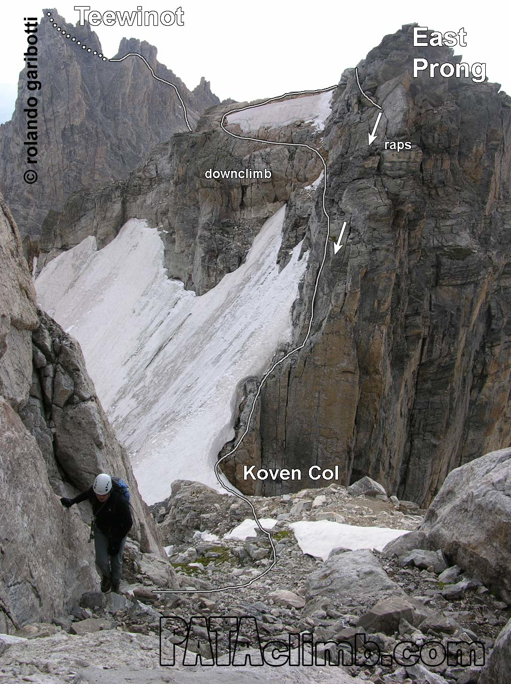 Not Hoka terrain. photo courtesy of Rolando GaribottiSo, if I was doing something like the Cathedral Traverse in the Tetons, Hokas would not be the shoe of choice. Of course, there are few true running shoes that I would use on such an undertaking so the point is really moot.
Not Hoka terrain. photo courtesy of Rolando GaribottiSo, if I was doing something like the Cathedral Traverse in the Tetons, Hokas would not be the shoe of choice. Of course, there are few true running shoes that I would use on such an undertaking so the point is really moot.
My friend, ultra running bad ass and fellow orthopedic physician assistant, Luke Nelson, has some reservations with Hokas pertaining to certain types of overuse injuries. He has no data for this but has seen a few runners come up lame using the Twinkie shoes. Certainly possible. But the vast majority of testimonials I read in my research suggest that most peoples’ injuries improve with the shoes. I think they’re worth a look.
In conclusion, I would say that for an aging athlete like me with the usual orthopedic wear and tear, Hokas are a great choice for softening the blow of running. And for the young studs out there? Perhaps taking care of your dogs now will keep you running longer. Just sayin’…